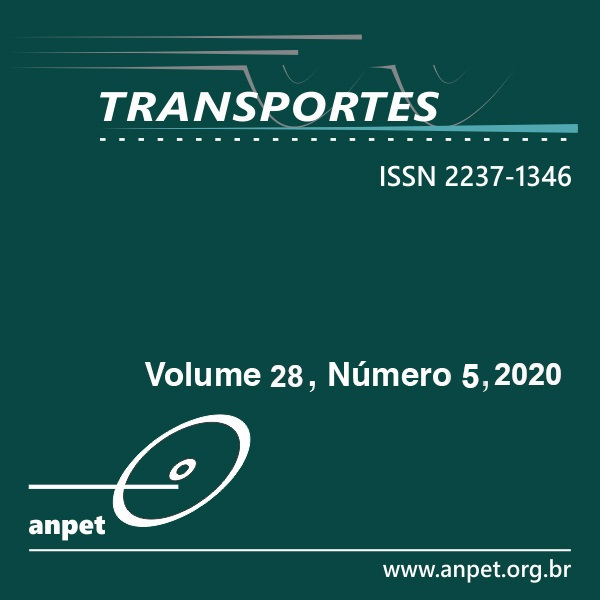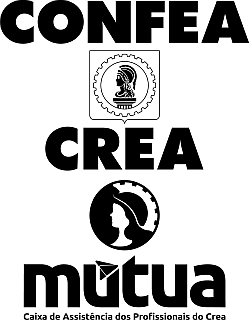Effects of drivers evasive behavior on the placement of automated enforcement equipment in highway systems
DOI:
https://doi.org/10.14295/transportes.v28i5.2233Keywords:
Transportation systems. Enforcement. Location. Evasion. Flow capture.Abstract
The placement of automated enforcement equipment on highways is a problem of interest for many roadway infrastructure entities and law enforcement agencies. It is common that in such cases the vehicles actively try to evade enforcement, because this allows them to continue to earn profit with illegal transportation and avoid the punishment of the law. If this is not considered in the planning stages of enforcement systems, drivers can easily avoid the enforcement with the aid of route planning software. This paper seeks to investigate how such behavior changes where the enforcement equipment should be located on highway networks, by firstly reviewing how this problem has been solved in literature and then experimenting with one of the main mathematical models. The results showed that accounting for evasive behavior when locating enforcement equipment does not significantly increase the number of monitored sections that are necessary but rather optimizes their location in order to cover all the possible paths between all source-destination pairs (within a defined maximum detour from the shortest path). If planning is done without considering evasive behavior and vehicles do show this behavior, then the system may be ineffective for enforcement. On the other hand, if this tendency to avoid enforcement is considered in planning, which is greater than that shown by real vehicles, then all vehicles will be successfully captured by enforcement, without resulting in an excessive increase in cost.
Downloads
References
AlGadhi, S. A. H. (2002). “Optimizing Truck Weigh Stations’ Locations on the Highway Network of Saudi Arabia.” Journal of King Saud University - Engineering Sciences, v. 14, n. 2, p. 147–163. DOI: 10.1016/S1018-3639(18)30750-5.
Ammarapala, V.; T. Chinda; P. Udomworarat; T. Rongwiriyapanich; A. Khampanit; S. Suanmali, e Samphanwattanachai, B. (2013). “Selection of weigh station locations in Thailand using the analytic hierarchy process.” Songklanakarin Journal of Science and Technology, v. 35, n. 1, p. 81–90.
Arslan, O.; O. Jabali e G. Laporte (2018). “Exact Solution of the Evasive Flow Capturing Problem.” Operations Research, v. 66, n.6, p.1625–1640. DOI: 10.1287/opre.2018.1756.
Cottrell Jr., B. H. (1992). The Avoidance of Weigh Stations in Virginia by Overweight Trucks. Virginia Transportation Research Council, Charlottesville.
Benekohal, R. F.; Y. M. El-Zohairy e S. Wang (2011). “Truck Travel Time Around Weigh Stations: Effects of Weigh in Motion and Automatic Vehicle Identification Systems.” Transportation Research Record, v. 3, n. 2, p. 1712–1719. DOI: 10.3141/1716-16.
Berman, O.; R. C. Larson e N. Fouska (1992). “Optimal Location of Discretionary Service Facilities.” Transportation Science, INFORMS, v. 26, n. 3, p. 201–211. DOI: 10.1287/trsc.26.3.201.
Boonmee, C.; M. Arimura e T. Asada (2017). “Facility location optimization model for emergency humanitarian logistics.” International Journal of Disaster Risk Reduction, Elsevier Ltd, v. 24, p. 485–498. DOI: 10.1016/j.ijdrr.2017.01.017.
Colson, B.; P. Marcotte e G. Savard (2007). “An overview of bilevel optimization.” Annals of Operations Research, v. 153, n. 1, p. 235–256. DOI: 10.1007/s10479-007-0176-2.
Cunagin, W.; W. A. Mickler e C. Wright (1997). “Evasion of Weight-Enforcement Stations by Trucks.” Transportation Research Record: Journal of the Transportation Research Board, v. 1570, n.1, p. 181–190. DOI: 10.3141/1570-21.
Forrest, J.; T. Ralphs; S. Vigerske; LouHafer; B. Kristjansson; Jpfasano; EdwinStraver; M. Lubin; H. G. Santos; Rlougee e M. Saltzman (2018). “Coin-Or/Cbc: Version 2.9.9.” Zenodo. DOI: 10.5281/zenodo.1317566.
Gendreau, M.; G. Laporte e I. Parent (2000). “Heuristics for the Location of Inspection Stations on a Network.” Naval Research Logistics, v. 47, n. 4, p. 287–303. DOI: 10.1002/(SICI)1520-6750(200006)47:4<287::AID-NAV2>3.0.CO;2-R.
Ghisolfi, V.; G. M. Ribeiro; G. L. D. Chaves; R. F. Orrico Filho; I. C. S. Hoffmann e L. R. Perim (2019). “Evaluating Impacts of Overweight in Road Freight Transportation: A Case Study in Brazil with System Dynamics.” Sustainability, v. 11, p. 3128. DOI: 10.3390/su11113128.
González, P. H.; G. Climaco; G. R. Mauri; B. L. Vieira; G. M. Ribeiro; R. D. Orrico Filho; L. Simonetti; L. R. Perim e I. C. S. Hoffmann (2019). “New approaches for the traffic counting location problem.” Expert Systems with Applications, v. 132, p. 189-198. DOI: 10.1016/j.eswa.2019.04.068.
Hodgson, M. J. (1990). “A Flow-Capturing Location-Allocation Model.” Geographical Analysis, v. 22, n. 3, p. 270–279. DOI: 10.1111/j.1538-4632.1990.tb00210.x.
Hodgson, M. J.; K. E. Rosing; A. Leontien e G. Storrier (1996). “Applying the flow-capturing location-allocation model to an authentic network: Edmonton, Canada.” European Journal of Operational Research, v. 90, n. 3, p. 427–443. DOI: 10.1016/0377-2217(95)00034-8.
Hongli, G.; L. Juntao e G. Hong (2011). “A survey of bilevel programming model and algorithm.” Proceedings - 2011 4th International Symposium on Computational Intelligence and Design, ISCID 2011, v. 2, p. 199–203. DOI: 10.1109/ISCID.2011.151.
Hooshmand, F. e S. A. MirHassani (2018) “An Effective Bilevel Programming Approach for the Evasive Flow Capturing Location Problem.” Networks and Spatial Economics, Springer Nature America, Inc., v. 18, n.4, p. 909–935. DOI: 10.1007/s11067-018-9415-0.
Jacob, B. e V. F. L. Beaumelle (2010). “Improving truck safety: Potential of weigh-in-motion technology.” IATSS Research, v. 34, n. 1, p. 9–15. DOI: 10.1016/j.iatssr.2010.06.003.
Kulović, M.; Z. Injac; S. Davidović e I. Posavac (2018). “Modelling Truck Weigh Stations’ Locations based on Truck Traffic Flow and Overweight Violation: A Case Study in Bosnia and Herzegovina.” PROMET - Traffic&Transportation, v. 30, n. 2, p. 163–171. DOI: 10.7307/ptt.v30i2.2423.
Liu, K.; Q. Li e Z. H. Zhang (2019). “Distributionally robust optimization of an emergency medical service station location and sizing problem with joint chance constraints.” Transportation Research Part B: Methodological, Elsevier Ltd, v. 119, p. 79–101. DOI: 10.1016/j.trb.2018.11.012.
Lu, C. C.; S. Yan; H. C. Ko e H. J. Chen (2018). “A Bilevel Model With a Solution Algorithm for Locating Weigh-In-Motion Stations.” IEEE Transactions on Intelligent Transportation Systems, Institute of Electrical and Electronics Engineers (IEEE), v. 19, n. 2, p. 380–389. DOI: 10.1109/TITS.2017.2696046.
Lu, J.; J. Han; Y. Hu e G. Zhang (2016). “Multilevel decision-making: A survey.” Information Sciences, Elsevier Inc., v. 346–347, p. 463–487. DOI: 10.1016/j.ins.2016.01.084.
Mahmoudabadi, A. e S. M. Seyedhosseini (2013). “Improving the efficiency of weigh in motion systems through optimized allocating truck checking oriented procedure.” IATSS Research, v. 36, n. 2, p. 123–128. DOI: 10.1016/j.iatssr.2012.08.002.
Marković, N.; I. O. Ryzhov e P. Schonfeld (2015). “Evasive flow capture: Optimal location of weigh-in-motion systems, tollbooths, and security checkpoints.” Networks, Wiley-Blackwell, v. 65, n. 1, p. 22–42. DOI: 10.1002/net.21581.
Marković, N.; I. O. Ryzhov e P. Schonfeld (2017). “Evasive flow capture: A multi-period stochastic facility location problem with independent demand.” European Journal of Operational Research, Elsevier B.V., v. 257, n. 2, p. 687–703. DOI: 10.1016/j.ejor.2016.08.020.
Mirchandani, P. B.; R. Rebello e A. Agnetis (1995). “The Inspection Station Location Problem In Hazardous Material Transportation: Some Heuristics And Bounds.” INFOR: Information Systems and Operational Research, v. 33, n. 2, p. 100–113. DOI: 10.1080/03155986.1995.11732271.
MirHassani, S. A. e R. Ebrazi (2012). “A Flexible Reformulation of the Refueling Station Location Problem.” Transportation Science, v. 47, n. 4, p. 617–628. DOI: 10.1287/trsc.1120.0430.
Mitchell, S.; M. O’Sullivan e I. Dunning (2011). “PuLP: A Linear Programming Toolkit for Python.” Department of Engineering Science, The University of Auckland.
Šelmić, M.; N. Bešinović e D. Teodorović (2011). “Locating weigh-in-motion checkpoints in traffic networks using genetic algorithm.” E-Society Journal, v. 2, p. 55–66.
Šelmić, M.; D. Teodorović e K. Vukadinovic (2010). “Locating inspection facilities in traffic networks: An artificial intelligence approach.” Transportation Planning and Technology, v. 33, n. 6, p. 481–493. DOI: 10.1080/03081060.2010.505047
Stackelberg, H. V. (1952). The Theory of the Market Economy. Oxford University Press.
Strathman, J. G. e G. Theisen (2002). Weight enforcement and evasion: Oregon case study.
Transportation Research Board. (1990). Truck Weight Limits: Issues and Options. Transportation Research Board. DOI: 10.17226/11349
Xiang, R.; G. Lu e D. He (2010). “Simulated annealing algorithm for solving A bi-level optimization model on high-speed railway station location.” ICIC 2010 - 3rd International Conference on Information and Computing, IEEE, v. 2, n. 1, p. 159–162. DOI: 10.1109/ICIC.2010.134
Yan, G. e Z. Shuzhi (2012). “A Study of Distribution Center Location and Transport Routes Optimization Based on Supply Chain.” World Automation Congress, IEEE, p. 4–7.
Yang, H. e J. Zhou (1998). “Optimal traffic counting locations for origin–destination matrix estimation.” Transportation Research Part B: Methodological, v. 32, n. 2, p. 109–126. DOI: 10.1016/S0191-2615(97)00016-7
Yen, J. Y. (1971). “Finding the K Shortest Loopless Paths in a Network.” Management Science, v. 17, n. 11, p. 712–716.
Yildiz, B.; O. Arslan e O. E. Karaşan (2016). “A branch and price approach for routing and refueling station location model.” European Journal of Operational Research, v. 248, n. 3, p. 815–826. DOI: 10.1016/j.ejor.2015.05.021
Downloads
Published
How to Cite
Issue
Section
License
Authors who submit papers for publication by TRANSPORTES agree to the following terms:
- The authors retain the copyright and grant Transportes the right of first publication of the manuscript, without any financial charge, and waive any other remuneration for its publication by ANPET.
- Upon publication by Transportes, the manuscript is automatically licensed under the Creative Commons License CC BY 4.0 license. This license permits the work to be shared with proper attribution to the authors and its original publication in this journal.
- Authors are authorized to enter into additional separate contracts for the non-exclusive distribution of the version of the manuscript published in this journal (e.g., publishing in an institutional repository or as a book chapter), with recognition of the initial publication in this journal, provided that such a contract does not imply an endorsement of the content of the manuscript or the new medium by ANPET.
- Authors are permitted and encouraged to publish and distribute their work online (e.g., in institutional repositories or on their personal websites) after the editorial process is complete. As Transportes provides open access to all published issues, authors are encouraged to use links to the DOI of their article in these cases.
- Authors guarantee that they have obtained the necessary authorization from their employers for the transfer of rights under this agreement, if these employers hold any copyright over the manuscript. Additionally, authors assume all responsibility for any copyright infringements by these employers, releasing ANPET and Transportes from any responsibility in this regard.
- Authors assume full responsibility for the content of the manuscript, including the necessary and appropriate authorizations for the disclosure of collected data and obtained results, releasing ANPET and Transportes from any responsibility in this regard.










